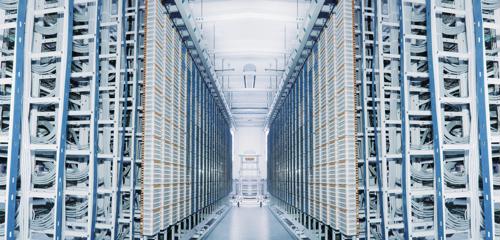
Data center operators have numerous reasons to optimize their facilities
By Max BurkhalterNovember 18, 2015
Tensions are high enough when the Internet connection in your home or at the office goes dead. Just think about the type of anxieties that might creep up if the entire country lost its Internet access. That very nightmare befell the nation of Azerbaijan earlier this week, according to Data Center Knowledge. After a fire in the data facility belonging to Delta Telecom, the nation's most important Internet service provider, almost every customer was forced to go without online access for several hours.
Over 600 networks, accounting for nearly 80 percent of all the Internet traffic in the country, went down after the fire cut off Delta Telecom from its main Internet connection path through Italy. The reality that an entire country's Internet access could be downed by a mere data center fire suggests that Azerbaijan's biggest provider is in need of rapid data center optimization. Locally, it's far less likely that a single natural disaster could bring down an entire city's Internet, let alone the entire country. Regardless, IT operators have plenty of reasons to optimize their facilities. The following examples just make up the short list:
"IT operators have plenty of reasons to optimize their facilities."
Successful optimization helps to limit time-consuming evaluations
The Data Center Journal pointed out that tasks like business-continuity testing and other forms of performance evaluation are extremely important to the long-term management of the data center. While planning and performing these tests is time consuming and may seem like a tedious exercise to employees, this step is absolutely necessary for catching performance problems in the data center before they begin to impact the business or, even worse, the customer.
Unfortunately, scheduling performance tests often enough to spot slowdowns and data bottlenecks as they occur is nearly impossible, or would require far too much of an IT expert's daily energy. To find a way to monitor the network and notify decision-makers when the occur, IT experts must track down equipment that is capable of correcting its performance based on designated key performance indicators.
Increasing electricity costs highlights the need for greater efficiency
The cost of electricity is already one of the largest operating expenses that IT managers must manage in the data center. According to Data Center Dynamics, organizations can expect these costs to rise over the next few years. Much of this shift is being driven by a political climate that is looking to embrace renewable energy over fossil fuel resources. As the nation's infrastructure goes through this transformation, demand for electricity will continue to rise. It's likely, given the circumstances, that the cost of this shift will be reflected in the cost of electricity.
That's why optimization should be a priority for IT teams, even if energy saving solutions are already in place. Simple updates to organization, such as using a serial server to to run multiple devices over a single virtual machine and reduce the total number of racks in the data center, can make an immediate impact in terms of energy efficiency.

Growing electricity costs highlight the need for optimization.
A smarter network helps to improve risk avoidance
Data center optimization entails more than replacing extraneous equipment with more streamlined infrastructure. Organizations must also find ways to speed up complex tasks without creating new opportunities for human error or network downtime to compromise the data center. One way that facilities can optimize and limit risks simultaneously is by automating documentation. Integrating a reporting solution into data center infrastructure may seem like a simple way to accomplish this goal, but human error and compliance woes are kept to a minimum when the generation of documentation is taken out of human hands.
Perle's serial to Ethernet converters connect serial based equipment across an Ethernet network. The Perle IOLAN range of Console Servers, Device Servers and Terminal Servers feature built-in support for IPv6 along with a broad range of authentication methods and encryption technologies.



